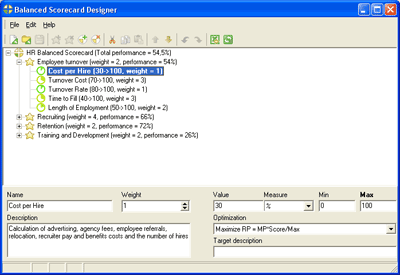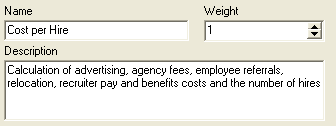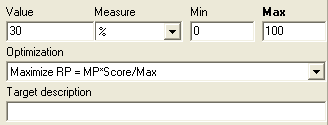Balanced Scorecard Designer is a software tool by AKS-Labs, which helps to design performance indicators and metrics.

The main window of the program contains three parts: metric tree, metric details and metric settings. Each part allows to fine tune the scorecard to fit company’s needs.
The scorecard is a tree of metric, where each metric has its own name, description and relative weight. These indicators might be grouped. Each group might contain any number of indicators, but it’s recommended to keep the number of indicators on the one level about 2-4. The group can also be a container for any other group, so if needed you can design a scorecard with any level of details.
Metric’s Details
The indicators details part of the window allows changing indicator name and adding description. Typically, description contains information on how to measure the progress within this indicator.

The weight value specifies the relative weight of the metric indicator. The weight should be between 1 and 10. The sum of weights of all metrics at the same level must be 10.
Metric’s settings
The third part of the window is metric’s settings. User can specify the optimization direction, e.g. if the current value should be increased or decreased to achieve target results. Also, in metric settings user can specify the scale on which the data is calculated, for instance it might be [-5…5] scale or [10,01 … 10,04] scale. The measurement units might be percents or any other units.

Once the scorecard was designed it could be saved for future use or it can be exported in Excel file, which is very useful when scorecard need to be integrated with other data source.
There are some other industry default features that make software easy to use. You can copy and paste metrics, you can undo and redo changes; you can move metrics or export to other programs.